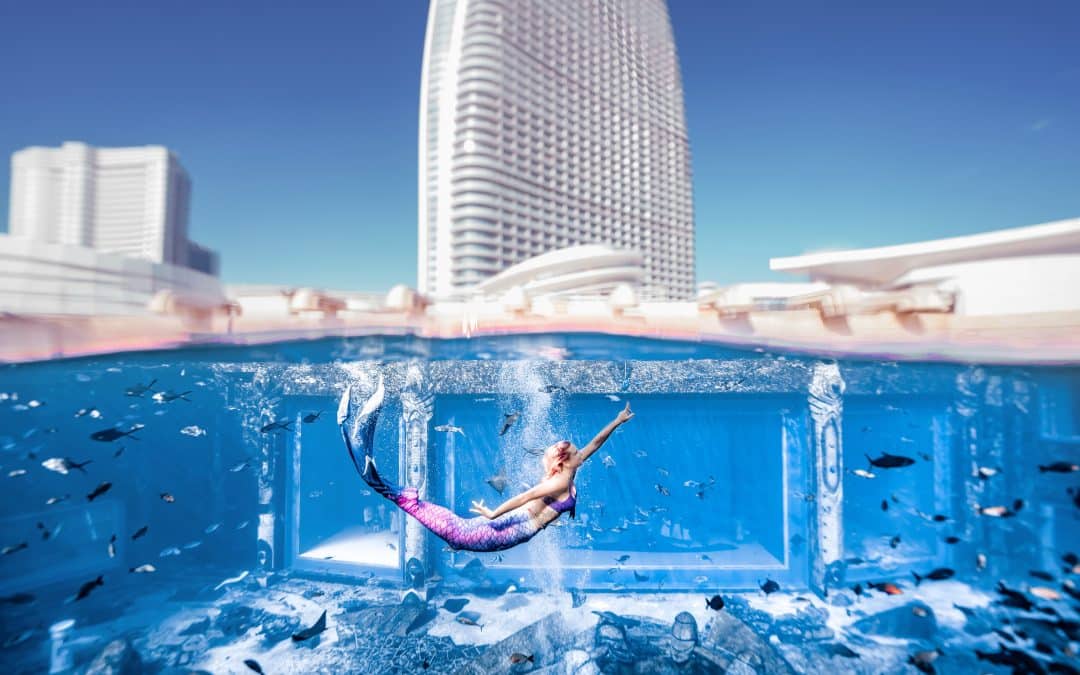The Art of Graceful Depth: Being a Mermaid Freediver
Embrace the Mermaid in You
Being a mermaid freediver gives rise to benefits beyond the physical. For starters, diving deeper takes you to a world of calm and peace where the only sound you can hear is your beat. Imagine the quietness, the purity of the deep blue sea. It helps you disconnect from your daily hustle-bustle and rejuvenate the soul within you.
Not just that, freediving is a form of meditation, and mindfulness is the key to success. It requires you to be present in the moment, focused on your breath, and aware of your body. It’s a moment of solitude where you get to explore yourself and your limits. The journey to becoming a mermaid freediver is a personal one, but it leads to the discovery of your inner mermaid.
It isn’t easy learning how to let go, it can take time and effort, but the results are fantastic. So, if you’re ready to embrace the mermaid in you, give freediving a try. You might surprise yourself with how deep you can go and how much you can discover about yourself.
Freediving component
Freediving is the art of exploring depths of the ocean with just a single breath. The feeling of weightlessness and the serene underwater surroundings – it’s like entering another world. Being a mermaid freediver takes this experience to a whole new level. It’s not just about diving deep, but doing it gracefully and elegantly – like a mermaid. But why be a mermaid freediver?
Well, besides the thrill of the sport, it’s a way to experience the ocean in a unique and intimate way. It’s a chance to connect with nature and challenge yourself physically and mentally. So, if you’re ready to dive in and embrace your inner mermaid, let’s explore the art of graceful depth together.
Mermaid Freedive Equipment
Get Equipped: If you’re new to the world of mermaid freediving, choosing the right equipment can be overwhelming. However, you don’t need to break the bank to start. As a beginner, there are few basic things you need to consider before getting started. First, let’s talk about basic freediving equipment like fins and mask. They are your fundamental assets that will enhance your performance underwater. Fins should fit snugly around your feet, while your mask should create a comfortable airtight seal around your face. As you progress in your practice, you may want to invest in special freediving fins which are typically longer and more flexible than traditional snorkeling fins.
I would recommend a wetsuit as it keeps you warm in the water by trapping a thin layer of water between your skin and the suit, which then gets gradually warmed up by your body temperature. For beginners, a simple full-body wetsuit in the appropriate thickness for the water temperature you plan to dive in will suffice. Monofin and bi-fins are two types of freediving fins. Monofins allow you to swim through the water with a single, dolphin-like motion, while bi-fins provide more maneuverability in the water. It’s ultimately up to personal preference, though starting off with bi-fins is advisable.
Proper weighting will help you descend smoothly, making sure you are positively buoyant at the surface with no air in your lungs. Remember, don’t hesitate to do thorough research or consult with a professional before making any investment. The right equipment can help you become a better mermaid freediver and have a much smoother diving experience.
When you are wearing a mermaid tail, you can find some pretty shell weights and weight belts.
Breath-Hold Techniques
Freediving requires divers to hold their breath for extended periods underwater. Thus, mastering breath-hold techniques is a critical aspect of freediving and Mermaiding. The ability to relax and control your breathing and heart rate is essential to maximizing your time underwater. The first step in breath-hold techniques is the breathe-up. Taking a few deep breaths into your belly before diving helps increase oxygen levels in your body and keeps you in a relaxed state to help you stay underwater for longer. Diaphragmatic breathing, assists in the relaxation of your body, as you prepare to dive into the water. As you inhale, take in as much air as you comfortably can through your mouth, filling up the entire lung cavity, hold it for a few seconds, then slowly exhale through your mouth while relaxing your muscles. Equalization is also an essential technique to master, allowing you to adjust the pressure in your ear canals as you descend deeper.
Lastly, Static apnea training involves practicing holding your breath for prolonged periods. Just like any other muscle, your lungs become more comfortable with extended breath-holds through persistent training. Through these breath-hold techniques, you can extend both your dive time and depth underwater while keeping a calm and relaxed state of mind to enhance your overall diving experience. Always do these with a dive buddy for safety, shallow water blackout is very dangerous and can lead to drowning if you are alone.
Underwater Techniques
To be a graceful mermaid freediver, you need to master a few key points when it comes to underwater techniques. Firstly, streamlining and buoyancy are important as they determine how smoothly and effortlessly you move through the water. The key is to maintain a horizontal position, with your body and equipment forming a sleek and hydrodynamic shape. This reduces drag and helps you to conserve your energy. Duck diving and descending are crucial skills that allow you to access deeper waters. With the right technique, you can efficiently and safely descend to greater depths. The key is to use your arms to gain momentum, take a deep breath, and then initiate the dive by tucking your head and bending at the waist. This technique helps you descend quickly and maintain control as you go deeper. Body positioning is important for both safety and efficiency. You want to maintain good posture and positioning throughout your dive to avoid any discomfort or risk of injury.
Accessing deep water requires patience, practice, and proper equipment and a course run by a professional. You want to start by diving at shallow depths and gradually building up your skills and endurance. As you become more confident and comfortable, you can start exploring deeper waters. Remember to always stay within your limits and do not push yourself too hard too soon. Safety measures should never be overlooked when it comes to freediving. Always ensure that you are diving in a safe environment with proper equipment and with a buddy or instructor. You should never take unnecessary risks or exceed your limits, and always prioritize your safety above all else.
Safety and Precautions
As with any adventurous activity, safety comes first in mermaid freediving. Always train with a professional, who can guide you through the proper techniques and safety measures. Never dive alone, as you may need assistance in case of an emergency. It is also important to manage risks effectively, by taking breaks between dives and not pushing yourself beyond your limits. Remember, mermaid freediving is an art that requires patience and practice. With the right safety measures in place, you can enjoy the freedom of the underwater world without any risks.
Conclusion
Be a Graceful Mermaid Freediver Today! Freediving is not just a sport, it’s a lifestyle. It’s about connecting with the ocean and embracing the mermaid within you. By mastering the art of graceful depth, you can experience a sense of freedom like no other. Join the freediving community and discover the many benefits beyond physical fitness. Meditation and mindfulness are just a few of the ways you can tap into your inner mermaid. Of course, safety should always be a top priority. Train with a professional, never dive alone, and always practice risk management. So what are you waiting for? Take the plunge and become a graceful mermaid freediver today!



Recent Comments